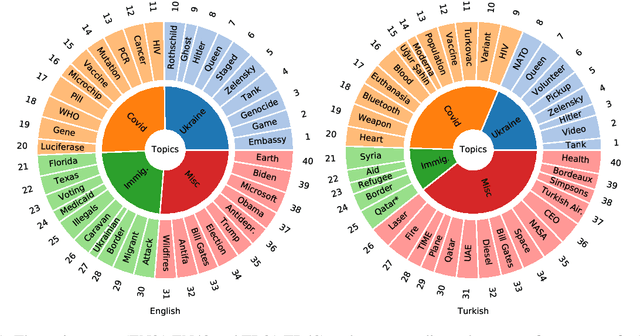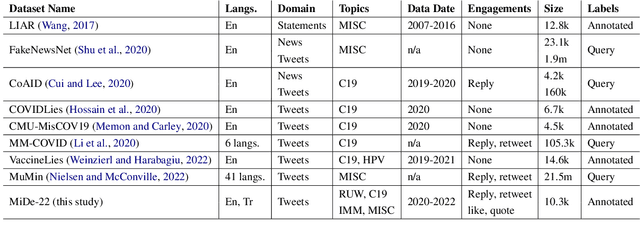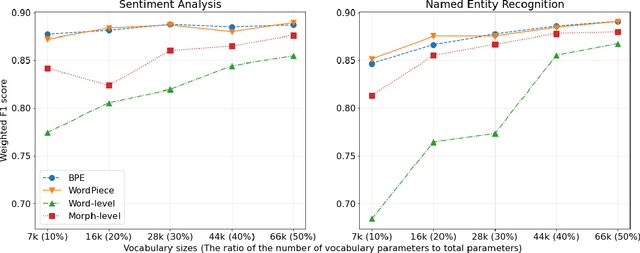Furkan Şahinuç
Systematic Task Exploration with LLMs: A Study in Citation Text Generation
Jul 04, 2024Abstract:Large language models (LLMs) bring unprecedented flexibility in defining and executing complex, creative natural language generation (NLG) tasks. Yet, this flexibility brings new challenges, as it introduces new degrees of freedom in formulating the task inputs and instructions and in evaluating model performance. To facilitate the exploration of creative NLG tasks, we propose a three-component research framework that consists of systematic input manipulation, reference data, and output measurement. We use this framework to explore citation text generation -- a popular scholarly NLP task that lacks consensus on the task definition and evaluation metric and has not yet been tackled within the LLM paradigm. Our results highlight the importance of systematically investigating both task instruction and input configuration when prompting LLMs, and reveal non-trivial relationships between different evaluation metrics used for citation text generation. Additional human generation and human evaluation experiments provide new qualitative insights into the task to guide future research in citation text generation. We make our code and data publicly available.
Not Good Times for Lies: Misinformation Detection on the Russia-Ukraine War, COVID-19, and Refugees
Oct 11, 2022



Abstract:Misinformation spread in online social networks is an urgent-to-solve problem having harmful consequences that threaten human health, public safety, economics, and so on. In this study, we construct a novel dataset, called MiDe-22, having 5,284 English and 5,064 Turkish tweets with their misinformation labels under several recent events, including the Russia-Ukraine war, COVID-19 pandemic, and Refugees. Moreover, we provide the user engagements to the tweets in terms of likes, replies, retweets, and quotes. We present a detailed data analysis with descriptive statistics and temporal analysis, and provide the experimental results of a benchmark evaluation for misinformation detection on our novel dataset.
Fast-FNet: Accelerating Transformer Encoder Models via Efficient Fourier Layers
Sep 26, 2022



Abstract:Transformer-based language models utilize the attention mechanism for substantial performance improvements in almost all natural language processing (NLP) tasks. Similar attention structures are also extensively studied in several other areas. Although the attention mechanism enhances the model performances significantly, its quadratic complexity prevents efficient processing of long sequences. Recent works focused on eliminating the disadvantages of computational inefficiency and showed that transformer-based models can still reach competitive results without the attention layer. A pioneering study proposed the FNet, which replaces the attention layer with the Fourier Transform (FT) in the transformer encoder architecture. FNet achieves competitive performances concerning the original transformer encoder model while accelerating training process by removing the computational burden of the attention mechanism. However, the FNet model ignores essential properties of the FT from the classical signal processing that can be leveraged to increase model efficiency further. We propose different methods to deploy FT efficiently in transformer encoder models. Our proposed architectures have smaller number of model parameters, shorter training times, less memory usage, and some additional performance improvements. We demonstrate these improvements through extensive experiments on common benchmarks.
Impact of Tokenization on Language Models: An Analysis for Turkish
Apr 19, 2022



Abstract:Tokenization is an important text preprocessing step to prepare input tokens for deep language models. WordPiece and BPE are de facto methods employed by important models, such as BERT and GPT. However, the impact of tokenization can be different for morphologically rich languages, such as Turkic languages, where many words can be generated by adding prefixes and suffixes. We compare five tokenizers at different granularity levels, i.e. their outputs vary from smallest pieces of characters to the surface form of words, including a Morphological-level tokenizer. We train these tokenizers and pretrain medium-sized language models using RoBERTa pretraining procedure on the Turkish split of the OSCAR corpus. We then fine-tune our models on six downstream tasks. Our experiments, supported by statistical tests, reveal that Morphological-level tokenizer has challenging performance with de facto tokenizers. Furthermore, we find that increasing the vocabulary size improves the performance of Morphological and Word-level tokenizers more than that of de facto tokenizers. The ratio of the number of vocabulary parameters to the total number of model parameters can be empirically chosen as 20% for de facto tokenizers and 40% for other tokenizers to obtain a reasonable trade-off between model size and performance.
Large-Scale Hate Speech Detection with Cross-Domain Transfer
Mar 02, 2022



Abstract:The performance of hate speech detection models relies on the datasets on which the models are trained. Existing datasets are mostly prepared with a limited number of instances or hate domains that define hate topics. This hinders large-scale analysis and transfer learning with respect to hate domains. In this study, we construct large-scale tweet datasets for hate speech detection in English and a low-resource language, Turkish, consisting of human-labeled 100k tweets per each. Our datasets are designed to have equal number of tweets distributed over five domains. The experimental results supported by statistical tests show that Transformer-based language models outperform conventional bag-of-words and neural models by at least 5% in English and 10% in Turkish for large-scale hate speech detection. The performance is also scalable to different training sizes, such that 98% of performance in English, and 97% in Turkish, are recovered when 20% of training instances are used. We further examine the generalization ability of cross-domain transfer among hate domains. We show that 96% of the performance of a target domain in average is recovered by other domains for English, and 92% for Turkish. Gender and religion are more successful to generalize to other domains, while sports fail most.
 Add to Chrome
Add to Chrome Add to Firefox
Add to Firefox Add to Edge
Add to Edge